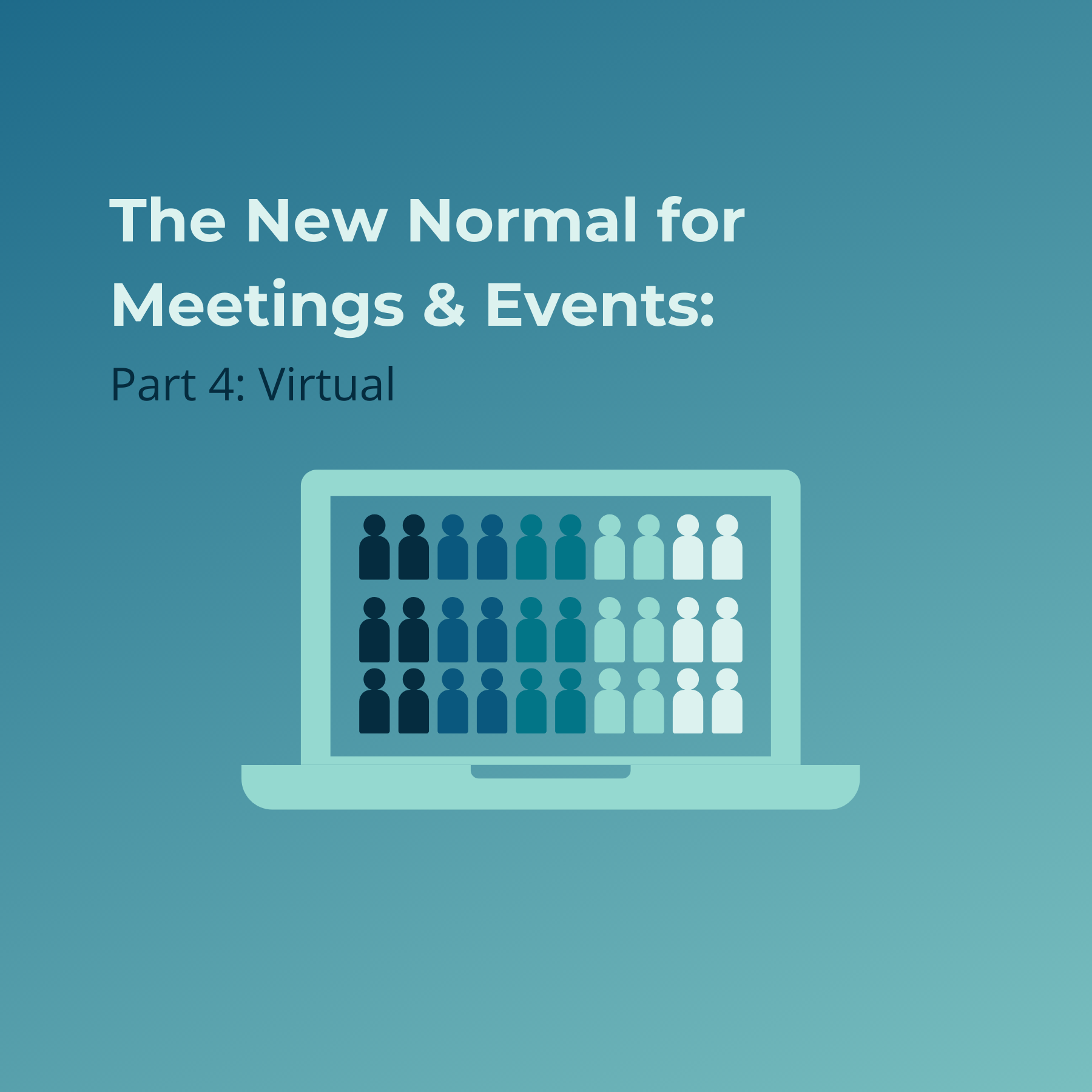New Normal Part 4- Virtual Components of Events
Blog describing the use of virtual event platforms in the meeting and event planning industry in short term and long term views during the COVID pandemic

We’ve all come to know the virtual event platform as a common solution for many cancelled face to face events planned during the height of the pandemic and quarantines. Companies such as Zoom, 6connex, and Vfair are just a few that have helped planners transition their meetings or conferences.
However, one of the takeaways from our learnings during this crisis and in past downturns is that they are only a short-term stopgap solution. Face to face events will never be replaced by virtual ones because of the personal connections, live networking opportunities, and relationships that can only be made at a live event.
With the evolution of virtual event platforms and the uneasiness of attendees to travel or feel comfortable in large groups, as live events start back up and while we are still months away from a COVID-19 vaccine, these platforms will continue to play a major part. For instance, those attendees that either cannot or refuse to travel due to medical issues but who still wish to participate will have several virtual options to keep themselves involved. Options could include live streaming the event, exclusive virtual content, or even a virtual attendee system where an assigned agent goes to the live event and collects the information, gets the answers to the questions, and makes the connections for the person that’s unable to attend. On the flip side, for event holders this allows them to continue to generate revenue by providing these options and thus getting the maximum amount of registrants as possible.
For as long as social distancing guidelines are in place, some attendees will continue to feel uneasiness. Until our society is anywhere from 18-24 months removed from the pandemic, live events will need to use virtual platforms in a hybrid system. For example, social distancing meeting space limitations can be solved with live streaming the speaker in one meeting space into the adjoining space on a projector. Eventually the virtual importance will dissipate but the need for a "hybrid" solution, combining a face-to-face event with a virtual component might be worth considering to reach those unable to attend for any reason at all, not just health or safety reasons. The upside of these new approaches is that we now have tested solutions to prepare ourselves and to make sure face to face meetings are safe and continuing. How do you feel about the future of virtual events and their impact of face to face meetings?